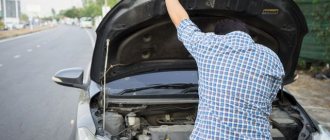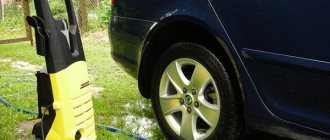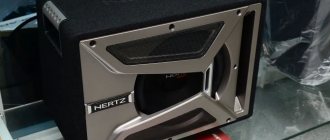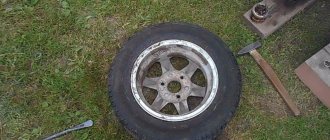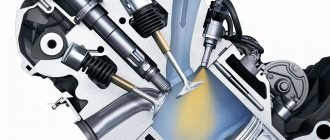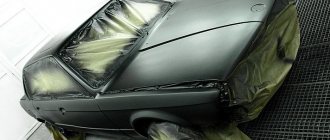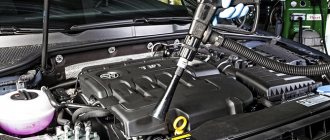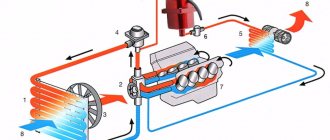Russian motorists love self-service car washes. According to experts, today every third resident of the metropolis prefers to wash the car themselves and, thereby, save a lot of money.
The self-service car wash is a complex equipped with vacuum cleaners, Karchers, shampoos and other devices that allow you to quickly clean up your car. The entire washing procedure at such complexes takes much less time than at stationary sinks. But the main advantage of self-service car washes is the affordable price of the procedure.
How much does it cost to wash your car at a self-service car wash?
The final cost of the service depends on how much time you spent washing your car. Experienced drivers can spend 100 rubles if we are talking about washing the body, or 150 rubles, along with cleaning the interior. Beginners will have to pay 150-200 rubles at first, respectively.
For comparison: at stationary car washes, a car will be cleaned for 300-500 rubles. True, the current price tag has dropped noticeably due to the growing demand for self-service car washes. Previously, a thorough car wash would have cost the driver 1,000 rubles.
In the cold season, as you know, the car needs to be washed more often in order to wash off harmful reagents from the paintwork. On average, experts recommend washing off dirt from the body at least once a week. Better - 2 or 3. It turns out that using a self-service car wash every month can save a decent amount of money.
How to wash at a self-service car wash in spring
According to Evgeny Smirnov, manager of the M1 self-service car wash network, there are no special features of car wash operation in winter and early spring. An important factor is weather conditions, that is, the temperature at which a person is comfortable being outside and washing his car.
The washing process scheme is as follows: using the first program, you need to cover the car from bottom to top with a highly concentrated solution with shampoo. If you have a very dirty car, you need to go through it with the first program twice. The distance between the gun and the paintwork should be no more than 25 cm.
Next, turn on the second program and cover the entire machine with high pressure shampoo. The distance between the gun and the paintwork is no more than 25 cm. Wash everything off using the third program (Rinse).
The distance between the gun and the paintwork is 30-40 cm. It is necessary to apply wax to the body using the fourth program. The distance between the gun and the paintwork is 30-40 cm. Finally, you need to wash off the wax using the fifth program “Shine + Drying”.
The distance between the gun and the paintwork is 30-40 cm.
Following this scheme, you should do it in a maximum of 8 minutes (many do it in 6.5-7 minutes) and get a high-quality result. However, if you previously drove off-road and did not wash the car the same evening, you are heading straight to a manual car wash (especially if you last degreased it last year).
“If you want to wash your car faster, immediately after finishing the second program, you can go to the fourth program “Wax”, bypassing the third - “Rinse”. As you know, any shampoo is a slightly alkaline compound. Wax is weakly acidic. Accordingly, the wax neutralizes the shampoo.
Applying a wax solution over the shampoo allows you to “break” the shampoo film faster, and you spend less time washing. After rinsing off the shampoo with wax, be sure to use the fifth program “Dry + Shine” and rinse off the wax.
If you take care of your car and degrease it regularly, I assure you that you will get good results
»
How self-service car washes work
9 Best Pressure Washers
Self-service car washes are gradually becoming a mandatory attribute in the lives of Russian drivers.
Such stations have long been successfully used abroad. In our country they have not yet received due recognition.
Some domestic car enthusiasts are skeptical about this type of service or do not know how to use this equipment.
Such objects allow the car owner to wash his “swallow” the way he wants.
There is no mandatory program of actions that are performed at ordinary, professional car washes.
The car enthusiast is given complete freedom of action. It can save on car washing costs, as well as reduce or increase the time spent on such maintenance. This complex, a self-service car wash, is a set of blocks or posts in which one or another operating mode can be implemented.
In advance, at some complexes this is done upon completion of the wash, payment is made.
There are several options for depositing money for the service:
Example of payment for a self-service car wash.
- The station's cash desk, where the cashier will accept money or offer a terminal for payment.
- A machine that accepts banknotes.
- A device that accepts tokens that can be purchased from the same cashier or machine.
After this, the owner of the car washes it in the modes for which he paid money.
A separate post is equipment consisting, as a rule, of two spray guns connected to corresponding tanks with water and foamy liquid.
Based on the selected mode, they are supplied under a certain pressure: high or low.
Also, to remove complex types of contaminants, the sink has cleaning equipment with a brush, a device for finishing with wax, as well as a vacuum cleaner, which, together with the compressor, is located in a separate unit and a place for washing car mats.
Possible self-washing modes
Some car enthusiasts, especially older people, are afraid of the possible operation of technical equipment at a car wash.
There is nothing unclear or complicated about their maintenance. Such complexes are equipped with detailed instructions that describe the progress of work with this device.
An example of instructions for using a self-service car wash.
Let's list the modes operating in the posts/blocks of self-washing stations, and also talk about the functions they perform:
- Rinsing or, as this operation is sometimes called, technical washing. This mode is used by drivers who are in a hurry about their business, or by car enthusiasts who want to at least put their car in order in this way. The pressure of water coming out of the gun is 140 bar. In summer, cold water is supplied, in winter - warm water.
- Pre-wash. This rinsing mode with detergent is used when the machine is heavily dirty. This mode helps to pre-wet a thick layer of dried dirt before the main wash.
- Covering the car with foam. Here, the car is coated with a chemical detergent from car cosmetics for a short time (about two to three minutes), which allows it to dissolve the dirt and separate it from the body.
- Water + detergent. One of the main types of washing. Using this solution, under a pressure of about 150 bar, foam, dirt dissolved by auto chemicals, and complex deposits are washed off.
- Water + plus detergent + brush. The last component is attached to the spray gun body. The brush, interacting with water, removes “heavy” types of dirt. This mode should be used to clean the car from dirt in hard-to-reach places, as well as to process car wheels, tuning parts: linings, sills, etc.
- Final mode. It is produced for final rinsing and helps prevent the appearance of streaks and stains remaining from car cosmetics.
- Wax coating. This operation makes it possible to keep body parts clean for a long time, protecting them with its layer. Hydrophobic material repels road dirt and dust from the surface of the car.
- Air treatment. A compressed air spray gun helps remove moisture from your car door locks, preventing them from freezing in the winter. The air flow also cleans the side mirrors from water droplets and rubber products.
It should be noted that the quality of washing largely depends on the concentration and effectiveness of detergents and car cosmetics.
Setting the required proportions for effectively cleaning a car from mud deposits is the prerogative of the owners of such complexes.
Their attempts to save money on such additives leads to poor-quality washing, and the subsequent outflow of customers from this point.
Therefore, it is recommended to choose stations where the self-wash is equipped with the proper amount of detergents.
How to get permission
Like any commercial enterprise, such stations require a large number of documents that provide the right to operate. Before you begin arranging and purchasing equipment, you should complete a package of papers.
The first thing you need to open a car wash is to register your business. To do this, you need to register as an individual entrepreneur or LLC. For beginning entrepreneurs, the first option is preferable because it saves time and effort.
The second step is choosing a tax system. Currently there are five of them. The most profitable is the simplified tax system. It is also called "simplified". This is no accident, because this type provides the simplest payment procedure. There are two tax options - 6% of income or 15% of profit; for the enterprise described in the article, the first is preferable.
When the procedure is completed, the owner of the company submits a petition to the city administration. Officials review it and decide whether to issue a permit. You will have to wait several weeks for an answer.
The next thing you need to open a car wash is a developed sketch. It must be approved by several authorities. These include:
- Sanitary and epidemiological station;
- locality leadership;
- municipal architect;
- Fire Department.
After preparing all the papers, they need to be sent again to the mayor's office. When all procedures are completed, you can begin arrangement.
Step-by-step instructions for washing your car at a self-service car wash
Choosing a self-washing station becomes easier every year: the number of such stations is increasing.
A car enthusiast can choose a similar complex for himself, located near his home, based on the recommendations of his friends.
The washing process depends on:
- Availability of various washing stations at the station.
- Difficulties in vehicle contamination.
- Free time for the vehicle owner.
As a rule, information stands of the complexes tell about the steps of carrying out self-washing.
Failure to follow the order of steps can lead to poor cleaning of the machine from dirt.
The driver will not get the desired result and will waste money for such a service.
Let's look at how to properly wash a car at a self-service car wash.
Standard sequence
If a car owner decides to carry out a standard wash, and he has a sufficient amount of time for this, then he must perform the following operating modes:
1. First, a pre-wash is carried out, the process of soaking the car takes place. Depending on the degree of contamination of the vehicle, the car is rinsed with plain water or using detergent. In this way, mud layers are softened and body parts are wetted with liquid. 2. The car, prepared for the process, moves to the next post, where it is covered with foam of a car cosmetic preparation. After waiting a short time for its interaction with the mud surface to occur, the machine moves to the next station post.
3. At this stage, the car owner rinses the body. Water under pressure washes away foam and dirt and cleans the body.
4. Stage of applying liquid wax. The surface of the car is coated with a protective agent, which extends the life of a “clean car”. The wax coating also gives the vehicle a shine and improves its appearance.
5. The last step of the water procedures is the final washing of the body. Here excess wax is removed and final rinsing is performed. At reputable self-washing stations, demineralized (desalted) water is used at this stage, which helps to quickly dry body parts.
Reverse osmosis helps prevent the appearance of stains and dirt stains on the paintwork of the body, and its cloudiness.
6. The final stage of such work is treating locks, window openings, and other gaps with compressed air, as well as drying the car.
This mode must be used in winter. Otherwise, the remaining liquid may freeze, and it will be difficult for the owner to get into his car.
If the car owner is not satisfied with the result of the procedure after any of the stages, he can repeat it, of course, for an additional payment.
How to properly wash a car at a self-wash
Let us denote the sequence of correct actions when washing a car yourself:
- Removing and washing rubber floor mats for the interior and luggage compartment.
- Pre-rinse.
- The main stage of washing.
- A short break to blot mud deposits with foamy liquid.
- Rinsing, which in difficult cases can be replaced by an initial wash with a brush.
- Applying a protective wax layer.
- Final rinse.
This algorithm of actions helps to thoroughly clean the car from the most difficult contaminants.
Washing the rugs is the first step in the process that is performed initially. It is done using ordinary water and detergent.
After this, the rubber products are hung out in a specially designated place for drying. By the end of washing the car, they are practically dry.
An example of drying rugs.
What not to do at self-service car washes
Inexperienced car enthusiasts sometimes complain that they are not satisfied with the quality of such washing systems.
Upon detailed analysis of the actions performed, it turns out that in many ways they themselves are to blame.
Let's list the mistakes that motorists most often make when washing their cars at self-service stations:
- Failure to maintain the required distance from the spray gun to the paintwork of the vehicle. The spray bottle should be kept no closer than 30 cm from the car body parts. A shorter distance can damage the thin paintwork from the pressure of liquid escaping under high pressure.
- Treatment of damaged areas of the machine with a powerful stream of water. Here we mean areas with chips, scratches, pockets of corrosion, etc. The pressure here can also have a negative impact on surrounding parts, tear off paint, and expand the damage area.
- Cleaning contaminated areas with a rag or cloth. Such actions can lead to the fact that dirt that gets on the material becomes an abrasive material and damages the paint coating and damages the appearance of parts.
- Washing small car parts at an angle. Moldings, nameplates, and small tuning parts can fly off their seats under pressure.
- Thoroughly wipe the fresh wax coating with a cloth. Excessive efforts will be in vain; they may lead to the disappearance of the protective material. The money spent on it will be thrown away.
- Cleaning radiators under pressure at close range. The honeycombs of these parts become very dirty during movement. However, you can’t overdo your work here either. High water pressure can damage the structure of the device, which consists of thin elements.
- Washing a hot power plant with cold water. It should be noted that the “engine washing” function is not available on every complex of this type. If it is present, then such a procedure can lead to the formation of microcracks on the hot engine body and introduce changes in the structure of the metal, which can lead to costly repairs.
- High-pressure washing of engine compartment elements, especially fuel mixture intake parts: intake pipes, throttle, electrical circuit elements. Under the current, these parts can become faulty.
When using the services of a self-service car wash, you need to take into account the season in which this action is carried out.
Washing a car in summer differs from a similar operation carried out in winter.
Place
The success of a business, including a self-service car wash, largely depends on its location.
There are several possible options, each with their own pros and cons:
- Mobile car wash. This is a moisture-resistant box designed for 1 or 2 cars. The cost of such a “building” is 0.7-1 million rubles. One advantage is that you can easily move the box from one place to another if something goes wrong. All equipment will move with you. This option is good for large and small cities, suitable for a small budget.
- In garages. This is an excellent option if there is a large neighborhood or highway near the car wash. Then you are guaranteed a large flow of clients. The main difficulty is adapting and converting a garage into a car wash, as well as obtaining documents permitting the work. You will need to think about the infrastructure - parking spaces, access to the car wash for different types of vehicles, connection of light and other communications.
- In industrial areas and on the outskirts of cities. This is a profitable option, since renting premises here is cheaper than in the center. And paperwork is easier. The main thing is that it is convenient for customers to get to you, and not stop at your competitors.
- In the center and residential areas of the city. This is also a good option if you have enough funds and can come to an agreement with the administration, residents of nearby houses and other authorities.
- In parking lots. This option is especially popular in large cities, where people do not have time to go to a car wash and clean up their car. The profitability of such a company depends on the number of parking spaces in the parking lot and the workload.
- In the suburbs and the countryside. Here it is important to assess the potential demand for car wash services. Often, residents of villages and suburbs wash their cars themselves or do it when they go to the city on business. But if the settlement is located on a busy highway, then the business can become profitable.
Some businessmen literally open a car wash in their home. To do this, they adapt the garage and save on renting space. But there are pitfalls here. If you open a car wash in your country house, you will not be able to grow vegetables and fruits there. And to open a business in a garage, you will have to spend a lot of time resolving issues with documents.
Differences between car washing in summer and winter at independent stations
The cold winter season makes its own adjustments to the business of washing cars at self-service stations.
Let us list the main differences between both processes:
- The main difference is that washing a car requires cold water in summer and hot water in winter.
- Body parts heated by the sun in the summer must be cooled with cold water before starting maintenance. At near zero and sub-zero temperatures, on the contrary, you should rinse the car with warm water. Such methods protect the paintwork of cars from damage.
- In winter, the car requires more thorough washing, since not only dirt gets into various hard-to-reach places, but also chemicals that are generously scattered by road services. Poor washing will not allow you to wash away these substances that are harmful to metal car parts. As a result, they can cause the formation of corrosion foci at sites where paintwork is damaged.
- Summer dirt that sticks to the body, especially while driving on rural roads, is difficult to wash off. To do this, you have to make additional efforts: treat such places with a brush, increase the number of rinses.
- Car mats that are washed at the beginning of the process do not require wiping in the summer. They will already dry out from the warm temperature. In winter, the car enthusiast will have to work hard to remove water from their surface. Otherwise, the remaining moisture will become a source of condensation in the car interior, which will fog up the windows.
Let us describe in more detail the washing process itself in summer and winter.
Proper car washing at a self-service complex in summer
In summer, mud deposits are varied. This could be pollen and traces of encounters with unlucky flying insects, berry juice and herbal greens, etc.
During the summer season, when washing your car you have to follow certain rules:
- The car body, especially for dark-colored cars, heats up to a high temperature under the sun. Therefore, to cool it down, you should rinse it with cold liquid before washing. It can be plain water, or a combination of water + detergent;
- Do not cover a hot car with foam. It dries out quickly and loses its working qualities. You should also strictly adhere to the regulations for its application or even reduce the time it takes for the foam to soak into the dirt to 2 minutes.
- In the summer, it is necessary to wax the body parts, as well as carry out a final rinse. These modes will help protect the paintwork from dirt and make the car cleaner.
It should be noted that summer washing is more comfortable. Warm water cools quickly in winter, and when it comes into contact with a car enthusiast, it creates an unpleasant sensation.
Proper washing at a self-service complex in winter
Washing a car in winter has its own nuances that are different from summer.
It is recommended not to perform this procedure at temperatures below -7°C.
Moisture will get into the mechanisms, which will cause additional problems for the car owner. After treatment with water, the paintwork may be damaged by frozen drops. If the car needs to be washed, it is better to do it in a regular car wash in a heated room. Here service workers will professionally dry it.
Let's talk about other points that need to be taken into account when washing your car in the winter at a self-service station:
- A prerequisite for washing a car in winter is warm water.
- Carry out washing in complexes where there are heated zones.
- After arriving at the station, you must pause to warm up the body.
- You should thoroughly rinse the car, especially its lower part, cleaning it from chemical reagents and adhering snow dirt.
- It is imperative to use the mode of applying a wax coating to the surface, which will protect against ice and mud deposits.
- Another mandatory procedure is to blow air through the gaps and door locks.
A freshly washed car cannot be parked immediately for a long time. It should warm up for some time while driving.
Business plan
When making calculations, you need to take into account all cost items that may arise. First of all, this is rent. The price depends on where exactly the station will be located. The closer to the center, the more expensive. On average, this will cost a businessman 50-100 thousand Russian rubles.
When thinking about how to build a car wash, you cannot help but take into account the cost of salaries. Salary depends on experience and qualifications. One average employee will cost the employer 30,000. If the ability to handle complex equipment is required, then the numbers will rise. For a point of normal size, it is enough to attract 9-10 workers to ensure the process in three shifts. Thus, maintaining the staff will take about 300,000.
Useful tips for saving money at self-service car washes
One of the main reasons for the popularity of such stations is their lower cost compared to classic car washes.
However, a car enthusiast can only benefit from the right actions.
We offer tips to help you save on such complexes:
- You should use the paid time rationally: you need to pick up the spray gun well in advance of starting the mode.
- To save time, washing car mats should be done near the place where they are dried.
- Before servicing, you need to stock up on small bills, which will allow you to economically pay for the services of using certain modes.
- During pauses, you can fill a bucket with water, take a sponge and manually walk through difficult stains. This will help avoid additional rinses.
- Don't use pauses too often. It takes time for the equipment to reach the required pressure.
- To extend the pause time, this trick is used. When the pause ends, you need to press a button for some mode, and then immediately turn on the “pause” button. In this case, no money will be charged.
- If the car owner regularly visits the car wash, then there is no need to use all modes. In this case, “waxing” or “pre-soaking” can be eliminated.
Each of the life hacks brings minor benefits. However, collectively they bring significant cost savings.
Answers to frequently asked questions
Car enthusiasts ask questions about the peculiarities of the operation of such complexes.
Let's list those that are more common.
Can water pressure from a gun damage paintwork?
Maybe if the gun is brought close to the surface of the car at a distance of less than 30 cm.
Also, water coming out under high pressure can tear off the paint in places located next to damaged areas: chips, scratches, etc.
In other cases, you don’t have to worry about the condition of the car’s paintwork.
Is it necessary to use all available modes in a self-washing complex?
The driver himself chooses the modes and their number based on the degree of pollution of the car, his free time and finances.
How much time is spent on self-washing?
Having some experience in self-washing, a car enthusiast can spend about half an hour on it.
Of these, 10 minutes are spent on washing the car, the rest on drying. For a beginner, the time required for such procedures increases.
Is it possible to wash the engine in such complexes?
This option is not available at all stations. Where available, work must be carried out carefully, following the rules for washing engines.
Does it make sense to apply a wax coating to car windows?
You can apply wax to the glass filling of a car, but there is no point in doing so. The operation of windshield wipers and window lifts levels the processing result to the initial level.
What are the disadvantages?
Whatever one may say, there are downsides, although not as many as it seems
The first is that time is limited, that is, if you are a beginner, you can wash it not as much cheaper as it seems.
Secondly , you need to wash it yourself, you can get dirty (wet), so if you are in “ceremonial attire” in trousers, shirt, shoes, this is not for you.
Third , and this is probably the most important disadvantage, washing in winter is not so easy to do because the room is not heated (maybe there will be a video about this a little later).
Now we are watching the video version
Well, in conclusion, self-service car washes are definitely a very convenient, fast and flexible tool. No matter how many times I come, there are never any queues, because everything is washed VERY FAST, and as I already wrote, it’s much CHEAPER. That's all - SINCERELY YOUR AUTOBLOGGER
Similar news
- How to sell a car?
- Took the gun off at a gas station
- PSI to atmosphere



